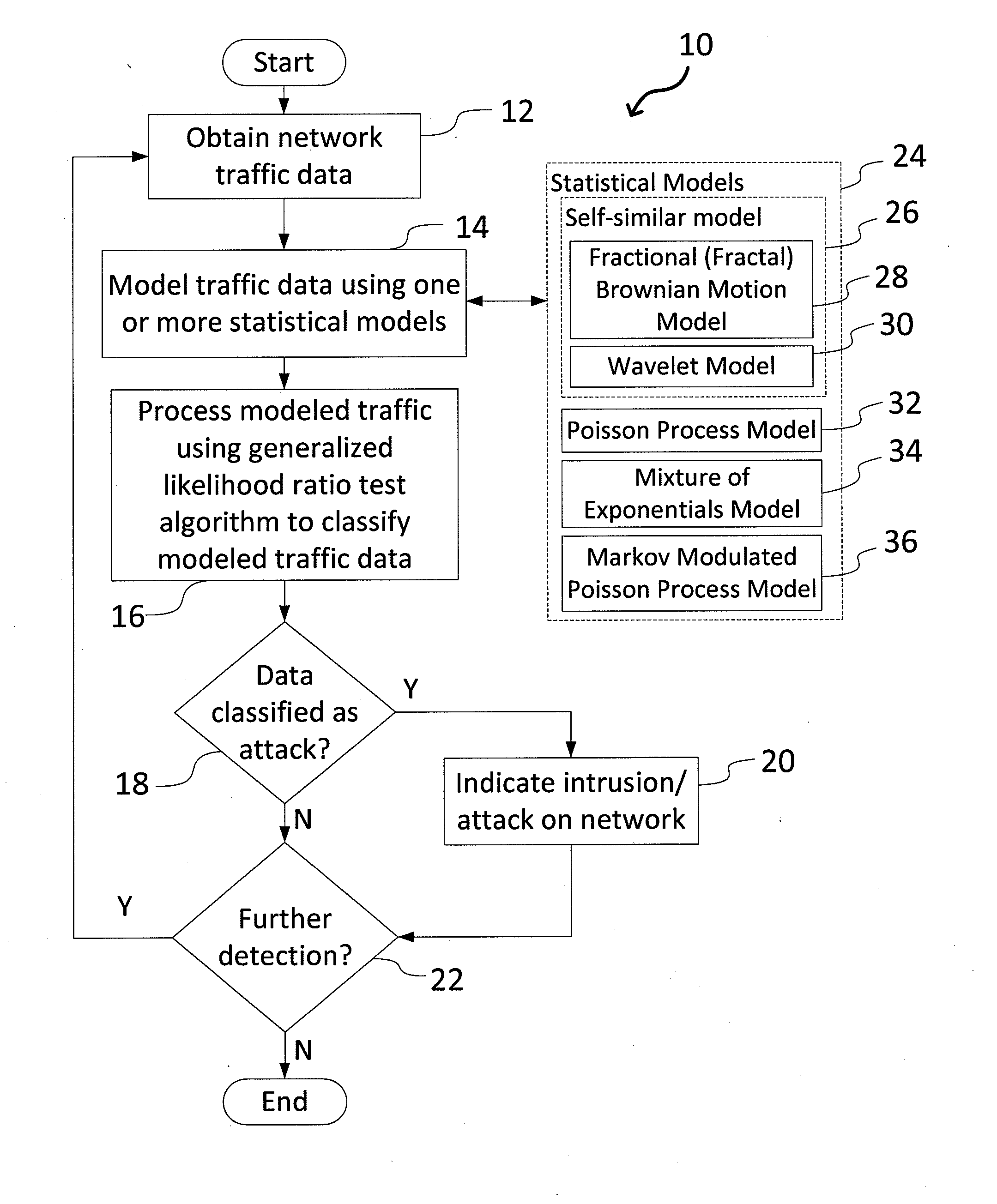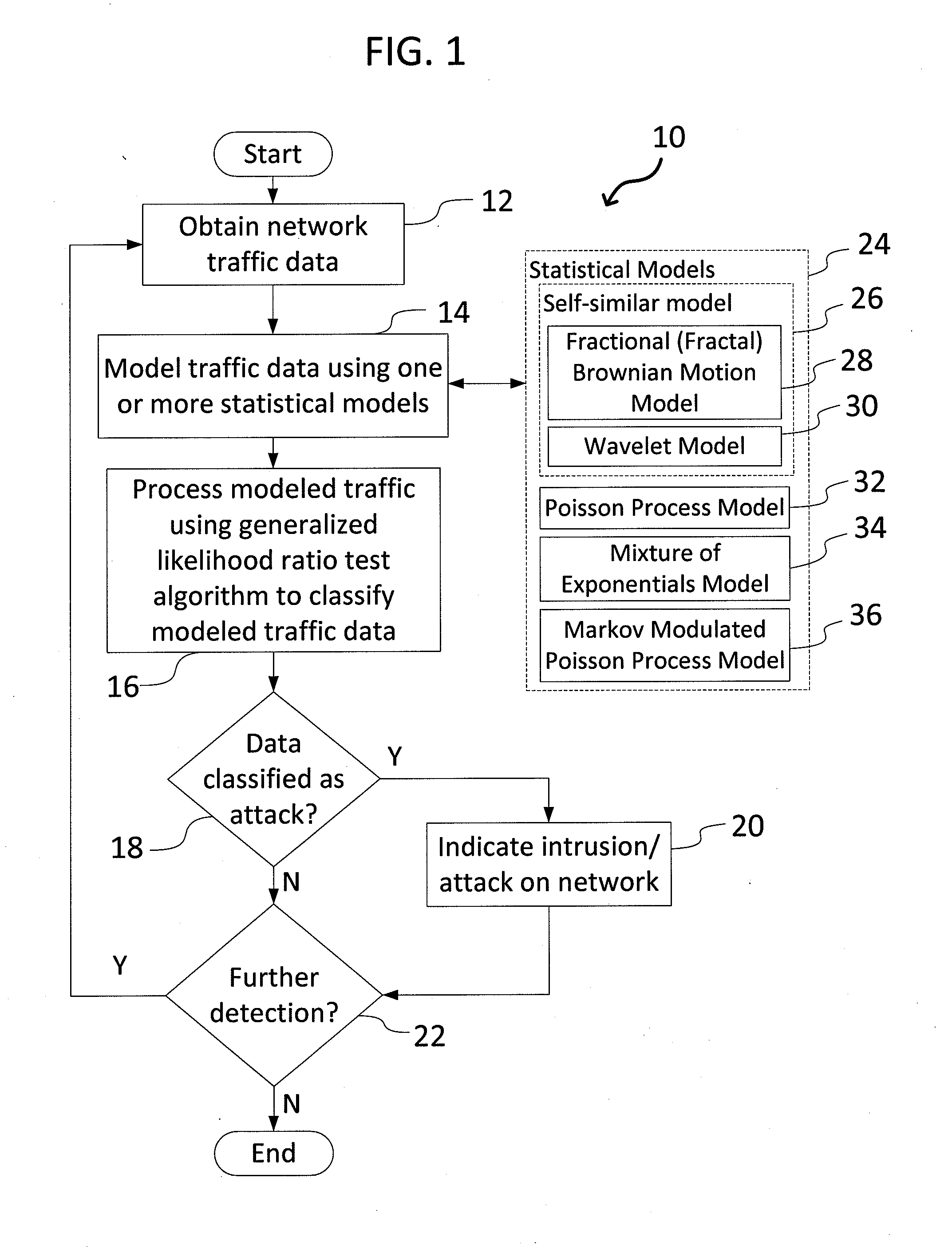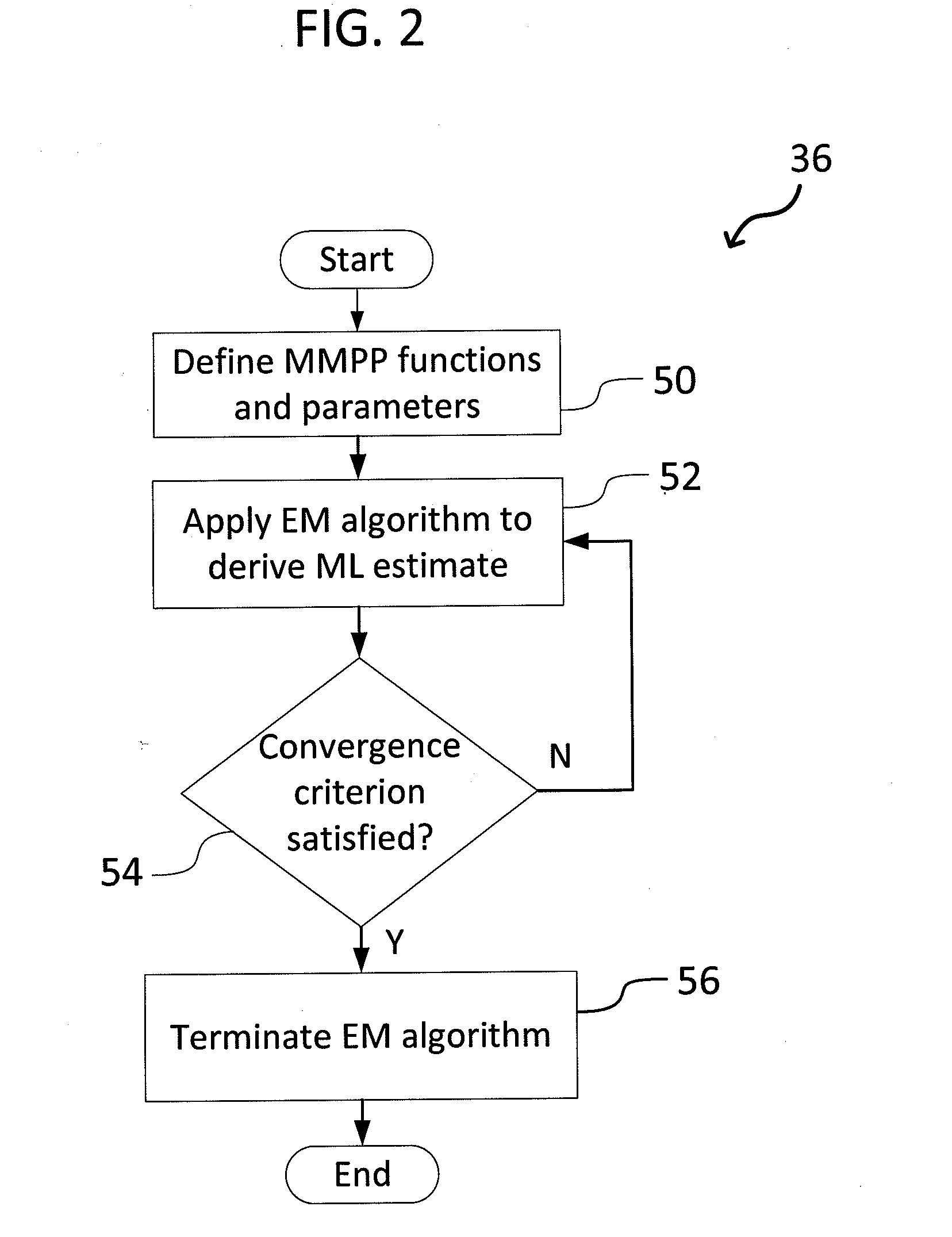System and Method for Detecting Network Intrusions Using Statistical Models and a Generalized Likelihood Ratio Test
a network intrusion and statistical model technology, applied in error detection/correction, unauthorized memory use protection, instruments, etc., can solve problems such as difficulty in detecting future anomalies, limited availability of labeled data for model training,
- Summary
- Abstract
- Description
- Claims
- Application Information
AI Technical Summary
Benefits of technology
Problems solved by technology
Method used
Image
Examples
Embodiment Construction
[0015]The present invention relates to a system and method for detecting network intrusions using one or more statistical models and a GLRT, as discussed in detail below in connection with FIGS. 1-4.
[0016]FIG. 1 is a flowchart showing overall processing steps 10 carried out by the network intrusion detection system of the present invention. The network intrusion detection system operates on the basic assumption that the normal behavior of a computer system occurs at high probability regions of a stochastic model, and anomalous behavior occurs at low probability regions. Beginning in step 12, the system electronically obtains (receives) network traffic data (e.g., network traffic signals). The traffic data could be received periodically by the system, and / or monitored in real time. In step 14, using statistical techniques (e.g., an expectation-maximization algorithm), one or more statistical models 24 executed by the system processes traffic data, where such models 24 could include a...
PUM
 Login to View More
Login to View More Abstract
Description
Claims
Application Information
 Login to View More
Login to View More - R&D
- Intellectual Property
- Life Sciences
- Materials
- Tech Scout
- Unparalleled Data Quality
- Higher Quality Content
- 60% Fewer Hallucinations
Browse by: Latest US Patents, China's latest patents, Technical Efficacy Thesaurus, Application Domain, Technology Topic, Popular Technical Reports.
© 2025 PatSnap. All rights reserved.Legal|Privacy policy|Modern Slavery Act Transparency Statement|Sitemap|About US| Contact US: help@patsnap.com



